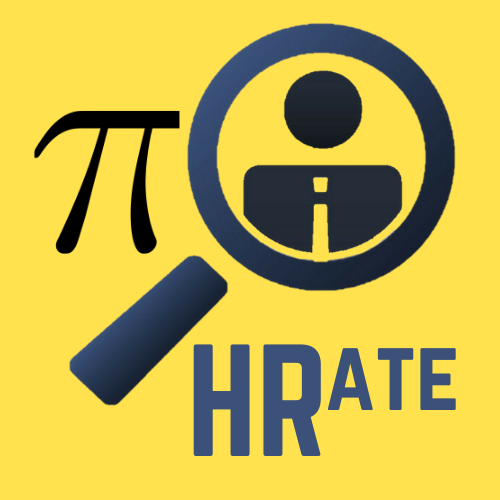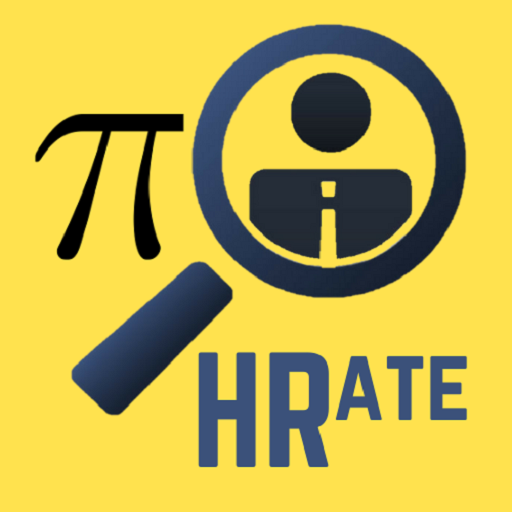Navigating the Nexus: Key Insights Shaping HR Technology and Digital Transformation in 2025

The recent “HR Technology and Digital Transformation Summit” brought together thousands of HR professionals globally, painting a vivid picture of a function at a critical juncture. As 2025 looms, the landscape of HR technology is not merely evolving; it’s undergoing a profound metamorphosis. Faced with increasingly complex workplace challenges and the relentless acceleration of digital transformation, HR leaders find themselves navigating a terrain that is simultaneously exhilarating and daunting. The summit’s sessions provided a crucial roadmap, delving into the strategic adoption of emerging technologies like AI, the power of integrated data, and the non-negotiable focus on human-centric employee experiences.
The consensus was clear: the future of HR is inextricably linked to technology, but its successful implementation hinges on strategic foresight, ethical grounding, and a deep understanding of the human element. Insights shared by panelists and experts underscored a shift from merely adopting tools to architecting ecosystems that drive tangible business value and foster a more personalized, engaging, and efficient workplace. This article synthesizes the core themes and critical takeaways from the summit, offering a deeper dive into the forces shaping the future of HR.

1. The 2025 HR Tech Landscape: Personal, Purposeful, Pervasive – and Intensely Complex
The overarching sentiment captured at the summit was one of dynamism mixed with apprehension. Words like “transformative,” “thrilling,” “hyped-up,” “fragmented,” and even “overwhelming” were used to describe the current state of HR technology. While the potential of AI, automation, and advanced analytics is undeniable, embedding these tools effectively into people operations presents significant hurdles.
A key takeaway was the maturation of HR tech beyond novelty. The focus is shifting from the potential of technology to its purpose. Speakers consistently warned against chasing the latest shiny object without first clearly defining the specific business problem it aims to solve. Is the goal to improve recruitment efficiency, enhance employee engagement, close critical skill gaps, or streamline compliance? Clarity of purpose is paramount. Meaningful outcomes depend less on having the most cutting-edge tool and more on aligning technology investments with strategic business objectives and genuine human needs.
Furthermore, the pace of innovation often outstrips the capacity of many HR teams to adapt. Feeling perpetually in a state of “catch-up” is common. This underscores the need for HR leaders to evolve from passive technology users into active technology stewards. This involves developing a deeper understanding of the tech landscape, evaluating vendors critically, prioritizing integration and usability, and championing a strategic, fit-for-purpose approach rather than attempting to adopt every new trend. There is no single “perfect” tech stack; the optimal configuration is unique to each organization’s context, goals, and maturity level.
2. Personalization at Scale: The Human-Centric Imperative
Perhaps the most resonant theme was the move towards deep personalization, powered by technology but driven by enduring human desires. The future of HR is not just digital; it’s profoundly human-centric. For years, employees have craved workplace experiences that recognize their unique skills, preferences, career aspirations, and individual circumstances. Technology is finally catching up to make this personalization achievable at scale.
This isn’t merely about customized dashboards or targeted communications. It encompasses:
- Skills-Based Development: AI-powered platforms (like Degreed or integrating with LinkedIn Learning) are moving beyond generic course catalogs. They analyze individual skill profiles, identify gaps relative to career goals or organizational needs, and recommend tailored learning journeys. This makes L&D more engaging, relevant, and impactful, directly supporting capability building and retention.
- AI-Enabled Listening: Advanced tools allow organizations to conduct continuous sentiment analysis, going beyond annual surveys to understand employee experience in real-time. This data can highlight friction points, identify flight risks, and inform targeted interventions, making employees feel heard and valued.
- Personalized Support: Chatbots and generative AI assistants are evolving from simple FAQ providers to sophisticated support tools. They can scrape internal knowledge bases, understand context, provide real-time answers tailored to the employee’s role or query, and even reflect the organization’s specific tone and values. This improves efficiency and delivers a consumer-grade support experience.
The summit made it clear: personalization is no longer a “nice-to-have” feature. It’s rapidly becoming the cornerstone of a compelling employee value proposition in the digital age. However, speakers also cautioned that personalization must be implemented thoughtfully to ensure equity and avoid inadvertently creating new divides. A design-thinking approach, involving employees in the co-creation process, is essential to get it right.
3. Taming the Tech Stack: Integration and User Experience Reign Supreme
The days of juggling dozens of disparate, poorly connected point solutions are numbered. A major priority for many organizations is consolidating their HR tech stack and ensuring seamless integration between core platforms (HRIS, ATS, LMS, Payroll, etc.) and newer tools. The fragmentation described by many attendees leads to significant inefficiencies: data silos, manual workarounds, inconsistent user experiences, and hampered analytics capabilities.
The drive towards integration is fueled by the need for:
- Improved Usability: Employees and managers are less likely to adopt and utilize tools that are clunky, unintuitive, or require multiple logins. A cohesive ecosystem with a user-friendly interface dramatically increases adoption rates.
- Cleaner Data & Better Analytics: When systems communicate effectively, data flows seamlessly, reducing errors and enabling more robust, cross-functional reporting and analytics. This allows HR to move beyond basic operational metrics to strategic insights about talent trends, engagement drivers, and the ROI of HR initiatives.
- Enhanced Productivity: Simplifying workflows and reducing the need for manual data entry frees up HR professionals and managers to focus on higher-value, strategic activities.
- Stronger Decision-Making: Integrated data provides a holistic view of the workforce, enabling leaders to make more informed decisions about talent acquisition, development, deployment, and retention.
The key insight here is that simplifying the tech stack while relentlessly focusing on the user experience (UX) is not just about convenience; it’s fundamental for achieving long-term adoption, maximizing return on investment (ROI), and unlocking the true potential of HR technology.
4. The AI Revolution: Balancing Pragmatism, Potential, and Pitfalls
Artificial Intelligence dominated the discussions, presented as both a transformative opportunity and a potential minefield if navigated carelessly. AI is rapidly embedding itself across the HR lifecycle, from sourcing and screening candidates (using tools like Hirevue, Eightfold, Paradox for matching and automation) to personalizing learning, powering chatbots, and enabling sophisticated workforce analytics.
However, several crucial nuances emerged:
- Hype vs. Reality: While AI’s potential is immense, speakers cautioned against getting caught in the hype cycle. The critical first step is always to define the business problem AI is intended to solve. Adopting AI for its own sake rarely yields positive results. Pragmatism must guide implementation.
- Adoption as the New Frontier: Many foundational AI tools for HR aren’t brand new. What is new is the accelerating pace of experimentation and adoption across organizations of all sizes. Resume matching, automated screening, and workflow automation are becoming table stakes. The challenge is shifting from discovering tools to strategically deploying the right ones responsibly and effectively.
- Curiosity and Experimentation: HR professionals were encouraged to remain curious, pilot AI solutions in controlled environments, and demand transparency and ethical assurances from vendors. Expecting some trial and error is realistic as adoption scales.
- AI as an Enabler, Not a Shortcut: AI excels at automating repetitive tasks, analyzing vast datasets, and identifying patterns humans might miss. Its true value lies in augmenting human capabilities, freeing up HR professionals to focus on strategic thinking, empathy, complex problem-solving, and relationship building – areas where the human touch remains irreplaceable. AI should be viewed as a partner, not a proxy for human judgment or connection.
- The Rise of Agentic AI: The summit explored the next evolution: “agentic AI” – digital agents capable of performing multi-step tasks autonomously, such as scheduling interviews, sending confirmations, updating HRIS records, and managing workflows. While promising, these “digital teammates” require careful strategic alignment with employee journeys and robust governance frameworks before widespread deployment. Integrating them based on hype rather than strategy could lead to chaos.
- Reshaping Employee Support: Chatbots and Generative AI are revolutionizing Tier Zero HR support. By providing instant, personalized answers drawn from internal knowledge bases, they significantly deflect support volume, improve operational efficiency, and offer measurable ROI. As one insight pithily put it: “If your intranet can’t keep up, your chatbot better step in.”
The overarching message regarding AI was one of cautious optimism. It’s a powerful tool that can elevate HR’s strategic impact, but only when implemented thoughtfully, ethically, and with a clear focus on solving real problems with measurable outcomes.
5. Data-Driven Decisions: From Overload to Actionable Insight
HR analytics has transitioned from a niche specialty to a core competency. Yet, many organizations still grapple with a deluge of data they struggle to translate into meaningful action. Technology provides more data points than ever – from recruitment metrics and performance data to engagement scores and learning analytics – but its power lies dormant until it informs strategy and drives improvement.
Key trends discussed include:
- Continuous Listening: Moving beyond point-in-time surveys to leveraging AI for ongoing sentiment analysis, providing a dynamic understanding of the employee mood and experience.
- Shifting Metrics: A discernible shift is occurring from traditional HR metrics focused on compliance and efficiency (e.g., time-to-fill, cost-per-hire) towards metrics that measure fairness, employee experience, skill development, inclusion, and tangible business outcomes.
- The Action Imperative: The emphasis is moving from simply reporting data to interpreting it and, crucially, acting upon the insights generated. Data is only valuable when it leads to informed decisions and targeted interventions.
- Ethical Guardrails: With greater data comes greater responsibility. Privacy, bias mitigation, and compliance remain critical considerations. Ensuring data is collected, stored, analyzed, and used ethically is paramount to maintaining employee trust and avoiding legal pitfalls.
The bottom line: Technology equips HR with unprecedented analytical capabilities, but realizing the impact requires developing the skills to ask the right questions, interpret the findings correctly, and translate insights into concrete actions that improve the business and the lives of its people.
6. The Ethical Tightrope: Governance, Fairness, and Change Management are Non-Negotiable
A universal truth echoed across nearly every panel was the critical importance of ethics and governance. Technology, particularly AI, deployed without robust oversight is not just ineffective; it’s a significant risk.
Key imperatives include:
- Continuous Auditing: AI algorithms used in hiring, performance management, or compensation must be regularly audited for fairness, bias (gender, race, age, etc.), and alignment with ethical principles and business goals. Transparency in how AI makes decisions is increasingly crucial.
- Cross-Functional Governance: Building the right infrastructure around HR tech, especially AI, cannot be an HR-only endeavor. Close collaboration with Legal (for compliance and privacy), IT (for security and integration), and Compliance teams is essential to establish clear policies, protocols, and accountability.
- Human Oversight: Automation should not mean abdication of responsibility. Human judgment must remain integral, particularly in sensitive areas like hiring and termination decisions.
- Managing Change Fatigue: Implementing new technologies inevitably involves change, which can lead to employee anxiety and resistance. Organizations must prioritize clear communication, comprehensive training, and empathetic leadership. Explaining the “why” behind the changes, involving employees in the process, and providing adequate support are critical for successful adoption and minimizing disruption.
Responsible AI and ethical technology deployment are not optional extras; they are fundamental to building trust, mitigating risk, ensuring fairness, and achieving sustainable success. It’s simply good business.
7. Breaking Down Silos: Cross-Functional Collaboration is Essential for Success
Digital transformation is an enterprise-wide endeavor, not a siloed departmental project. The summit repeatedly reinforced that HR technology initiatives cannot succeed in isolation. Achieving the full potential of digital transformation requires deep, ongoing collaboration between HR and other key functions:
- IT: For infrastructure, security, integration, and technical expertise.
- Legal & Compliance: For navigating privacy regulations, ensuring ethical AI deployment, and managing risk.
- Finance: For aligning technology investments with budgets, measuring ROI, and integrating workforce data with financial planning.
- Operations: For understanding workflow impacts, ensuring tools support core business processes, and driving adoption among line managers and employees.
When HR is embedded in the broader enterprise strategy and works in close partnership with other departments, technology implementations are more likely to be aligned, adopted, and ultimately successful. Digital transformation works best when it’s a shared responsibility, breaking down traditional functional barriers.
8. HR’s Strategic Ascent: Leading the Digital Transformation
Perhaps the most powerful and persistent theme was the call for HR to step up and lead digital transformation, not merely support it from the sidelines. The function sits uniquely at the intersection of people, process, and technology, making it ideally positioned to guide organizations through this complex transition.
This requires a fundamental shift in mindset and capabilities within HR itself:
- Beyond Tools to Transformation: True digital transformation isn’t just about implementing new software; it’s about fundamentally rethinking workflows, redesigning processes, fostering a culture of adaptability, and aligning technology with strategic human capital goals.
- Upskilling HR Professionals: HR teams need to develop greater digital literacy, data acumen, change management expertise, and strategic thinking skills. Investing in upskilling the HR function itself is a top priority for organizations serious about transformation.
- Championing the Human Element: In an increasingly tech-driven world, HR’s role as the champion of the human experience becomes even more critical. HR must ensure that technology serves people, enhances connection and collaboration, and fosters an inclusive, ethical, and engaging workplace culture.
The summit concluded with a clear mandate: HR’s strategic role in shaping the future of work through digital transformation is non-negotiable. By embracing technology strategically, prioritizing the human experience, fostering collaboration, and leading with ethical foresight, HR can solidify its position as a vital driver of organizational success in 2025 and beyond. The transformation is complex, but the opportunity for impact has never been greater.



